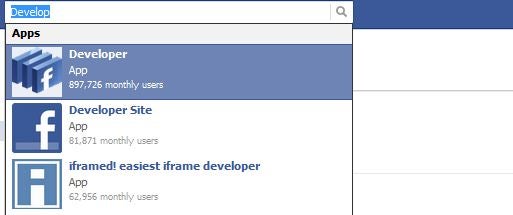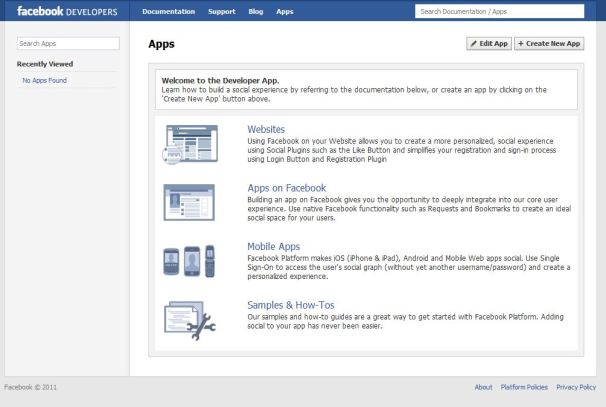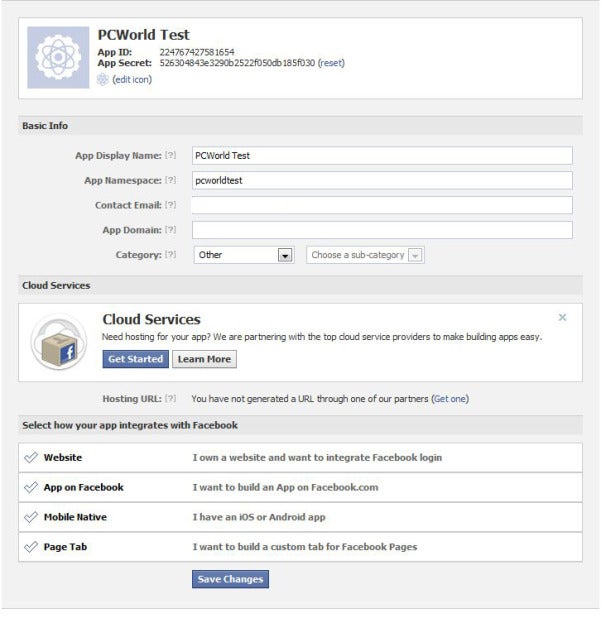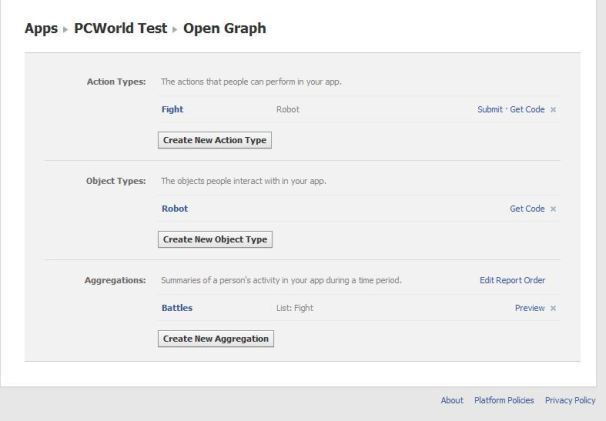Most users will have to wait a few weeks before they get to see Facebook’s most drastic changes to the service since the company was founded, but you can use a developers' workaround to gain access to the Timeline feature right now.
Developers already have access to early beta versions of the new features. Luckily for users eager to try out the revamped Facebook, becoming a developer is a simple process that shouldn’t take you more than 5 or 10 minutes.
Facebook announced the updates Thursday at the company’s f8 developers' conference
First, log into Facebook and enable developer mode. The easiest way to do this is to just type “developer” into Facebook’s search box and click the first result. It should look like this.

You’ll have to retype your password and allow the developer app basic access to your account before you see a screen that looks something like this.

This is the basic developer page. We’re going to convince Facebook we’re real developers and create an app that uses its new “Open Graph” tech. Don’t worry, it’s not nearly as hard as it sounds.
Now, create a new app by clicking the button in the top left corner. Nobody but you will see the app, so the information you enter doesn’t actually matter. Just create an app name and namespace (the latter needs to be all lowercase), agree to the terms and conditions, and create the app. Now you should arrive at the app’s main setting screen, as shown below:

Click on the link labeled “Open Graph” on the left (not shown here) to open up the Open Graph Getting Started page. To get started with Open Graph, you’ve got to fill in an action your app can do and an object for your app to interact with. This can be any verb and noun. (For instance, my fake app fulfills my lifelong dream of fighting a robot.)
After you’ve created your action and object, click the Get Started button. This will drop down the first of three pages of settings but, since no one will see them, they shouldn’t matter. Quickly click through them to create your app. When you’re done, you should see a page like this:

Be warned that the new Timeline is a little bit buggy, and not everything Zuckerberg promised in Thursday’s keynote has been implemented yet, but if you want to get a handle on Facebook’s new features early, or try out the new Spotify app, or just gain bragging rights with your friends, this should be your golden ticket.
Some things to note: Even though you now have access to the Timeline, it still won't be your default homepage. To get back to your timeline view you'll need to surf to http://www.facebook.com/YOURNAMEHERE?sk=timeline, switching out the YOURNAMEHERE part with your facebook username, or just bookmark the timeline page when you get to it.
If you decide to take the plunge, keep in mind this is a developer beta so expect to see bugs. There are also no guarantees that an accident won't happen that briefly makes all your profile information public. So the risk is yours if you try Timeline
Developers already have access to early beta versions of the new features. Luckily for users eager to try out the revamped Facebook, becoming a developer is a simple process that shouldn’t take you more than 5 or 10 minutes.
Facebook announced the updates Thursday at the company’s f8 developers' conference
Step-by-Step Instructions
Here’s how you do it.First, log into Facebook and enable developer mode. The easiest way to do this is to just type “developer” into Facebook’s search box and click the first result. It should look like this.

You’ll have to retype your password and allow the developer app basic access to your account before you see a screen that looks something like this.

This is the basic developer page. We’re going to convince Facebook we’re real developers and create an app that uses its new “Open Graph” tech. Don’t worry, it’s not nearly as hard as it sounds.
Now, create a new app by clicking the button in the top left corner. Nobody but you will see the app, so the information you enter doesn’t actually matter. Just create an app name and namespace (the latter needs to be all lowercase), agree to the terms and conditions, and create the app. Now you should arrive at the app’s main setting screen, as shown below:

Click on the link labeled “Open Graph” on the left (not shown here) to open up the Open Graph Getting Started page. To get started with Open Graph, you’ve got to fill in an action your app can do and an object for your app to interact with. This can be any verb and noun. (For instance, my fake app fulfills my lifelong dream of fighting a robot.)
After you’ve created your action and object, click the Get Started button. This will drop down the first of three pages of settings but, since no one will see them, they shouldn’t matter. Quickly click through them to create your app. When you’re done, you should see a page like this:

You're In!
Congratulations, you’re now a Facebook developer on the cutting edge. Just wait a few minutes for your new developer status to filter through the system. Then return to the Facebook homepage where you should find an invite for Timeline at the top of the screen.Be warned that the new Timeline is a little bit buggy, and not everything Zuckerberg promised in Thursday’s keynote has been implemented yet, but if you want to get a handle on Facebook’s new features early, or try out the new Spotify app, or just gain bragging rights with your friends, this should be your golden ticket.
Some things to note: Even though you now have access to the Timeline, it still won't be your default homepage. To get back to your timeline view you'll need to surf to http://www.facebook.com/YOURNAMEHERE?sk=timeline, switching out the YOURNAMEHERE part with your facebook username, or just bookmark the timeline page when you get to it.
If you decide to take the plunge, keep in mind this is a developer beta so expect to see bugs. There are also no guarantees that an accident won't happen that briefly makes all your profile information public. So the risk is yours if you try Timeline
 Blog RSS Feed
Blog RSS Feed Via E-mail
Via E-mail Twitter
Twitter Facebook
Facebook

